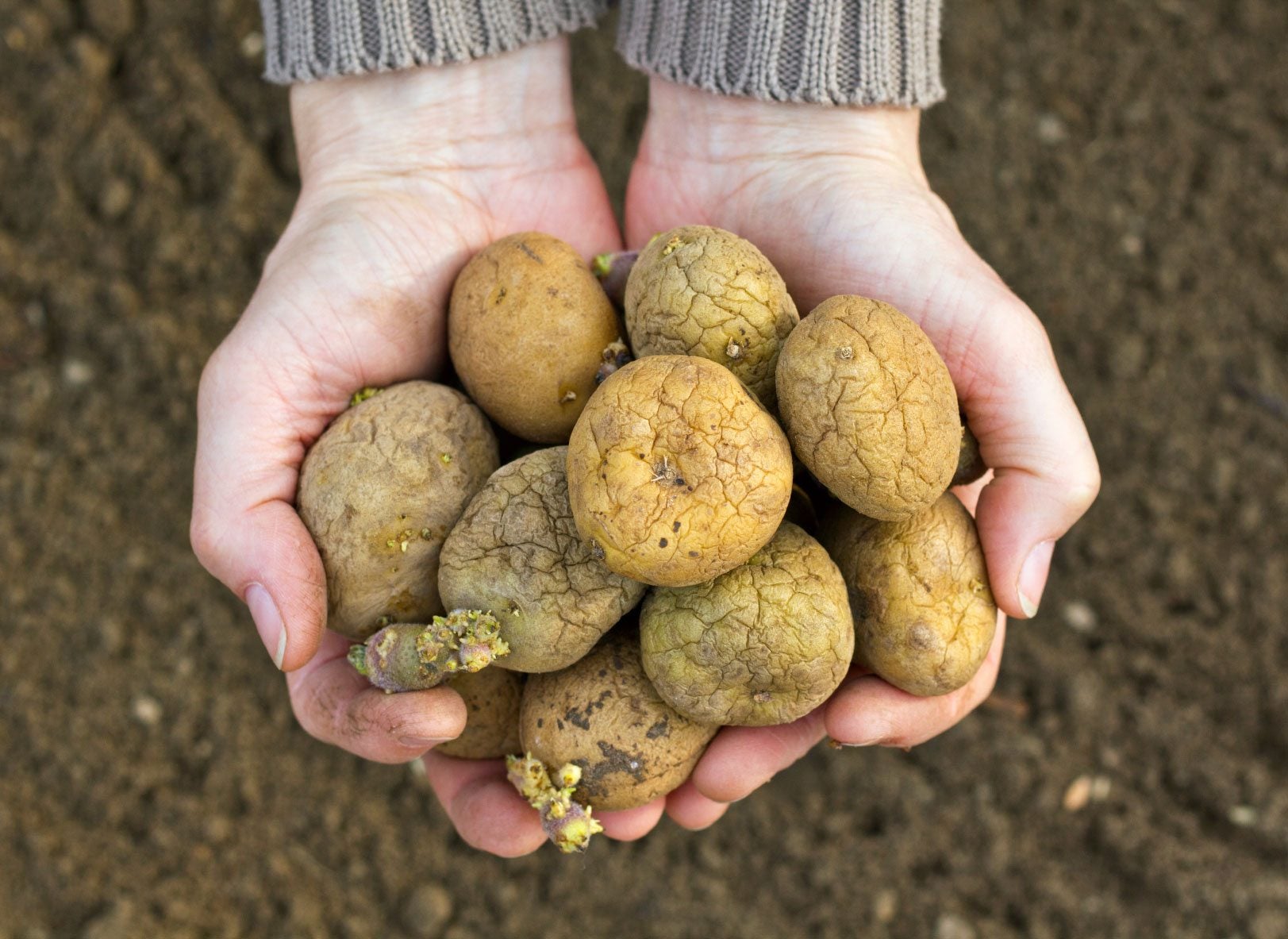Tips On Saving Seed Potatoes For Planting Next Year

Potatoes are a staple crop and are commonly cultivated for commercial purposes. Today, commercial potato producers use USDA certified seed potatoes for planting to reduce the incidence of disease. Back in the day, there were no such certified seed spuds, so how did folks go about saving seed potatoes and what conditions are best for seed potato storage?
Can I Save Seed Potatoes for Next Year?
There are many schools of thought with regards to saving seed potatoes for planting the successive year. Many people say to just use USDA certified seed potatoes. This will indeed be the most direct route to a healthy, disease free crop of spuds, but these seed potatoes can also be quite pricey.
Although a cheaper idea, attempting to use non-organic supermarket potatoes for seed is not recommended, as they are often treated with chemicals to prevent sprouting during storage; hence, they will likely not sprout after planting. So, yes, you can save your own seed potatoes for planting the next year. Commercial growers tend to use the same fields year after year, which increases the chance that diseases will infect the tubers.
Home gardeners using their own seed potatoes would be wise to rotate their potato crops, or any member of the Solanaceae family (among these are tomato and eggplant) if at all possible. Maintaining a weed-free area around the plants will also aid in retarding disease, as will sowing in organic rich, well draining soil.
How to Save Your Own Seed Potatoes
Your seed potatoes will need a rest period before planting. The rest period induces sprouting, but improper storage can precipitate premature sprouting. Temperature fluxes can precipitate these premature sprouts, so it is important to practice proper seed potato storage. Harvest potatoes that you wish to use next year as seed potatoes and brush off, don't wash, any dirt.
Place them in a cool, dry are of around 50 F. (10 C.). Three to four weeks prior to planting, put the potatoes in an area with brighter light, such as a sunny window or beneath grow lights. The seed potatoes should be maintained at a high humidity during this period. Covering with moist burlap bags will aid in initiating sprouting as well.
Small potato seed can be planted whole, but large spuds must be cut. Each seed piece should contain at least two or three eyes and weigh around 2 ounces (170 g.). Plant in rich, well draining soil with an all purpose fertilizer worked into the top 6 inches (15 cm.). Most people plant seed potatoes in hills and it is a good idea to apply a thick layer of organic mulch (grass clipping, straw, or newspaper) around the plants.
Sign up for the Gardening Know How newsletter today and receive a free copy of our e-book "How to Grow Delicious Tomatoes".
Hills should be 10-12 inches (25-30 cm.) apart in rows 30-36 inches (76-91 cm.) apart. Irrigate the hill well each week -- about 1-2 inches (2.5-1 cm.) of water at the base of the plant. For the best results using your own seed potatoes, proper storage is crucial, allowing the tuber time to rest. Select potato varieties that are tried and true, such as heirloom varieties that our grandparents grew and routinely saved for their own seed potatoes.
Practice crop rotation, especially if the plot has been planted with any member of the Solanaceae family in the last three years.

Amy Grant has been gardening for 30 years and writing for 15. A professional chef and caterer, Amy's area of expertise is culinary gardening.
